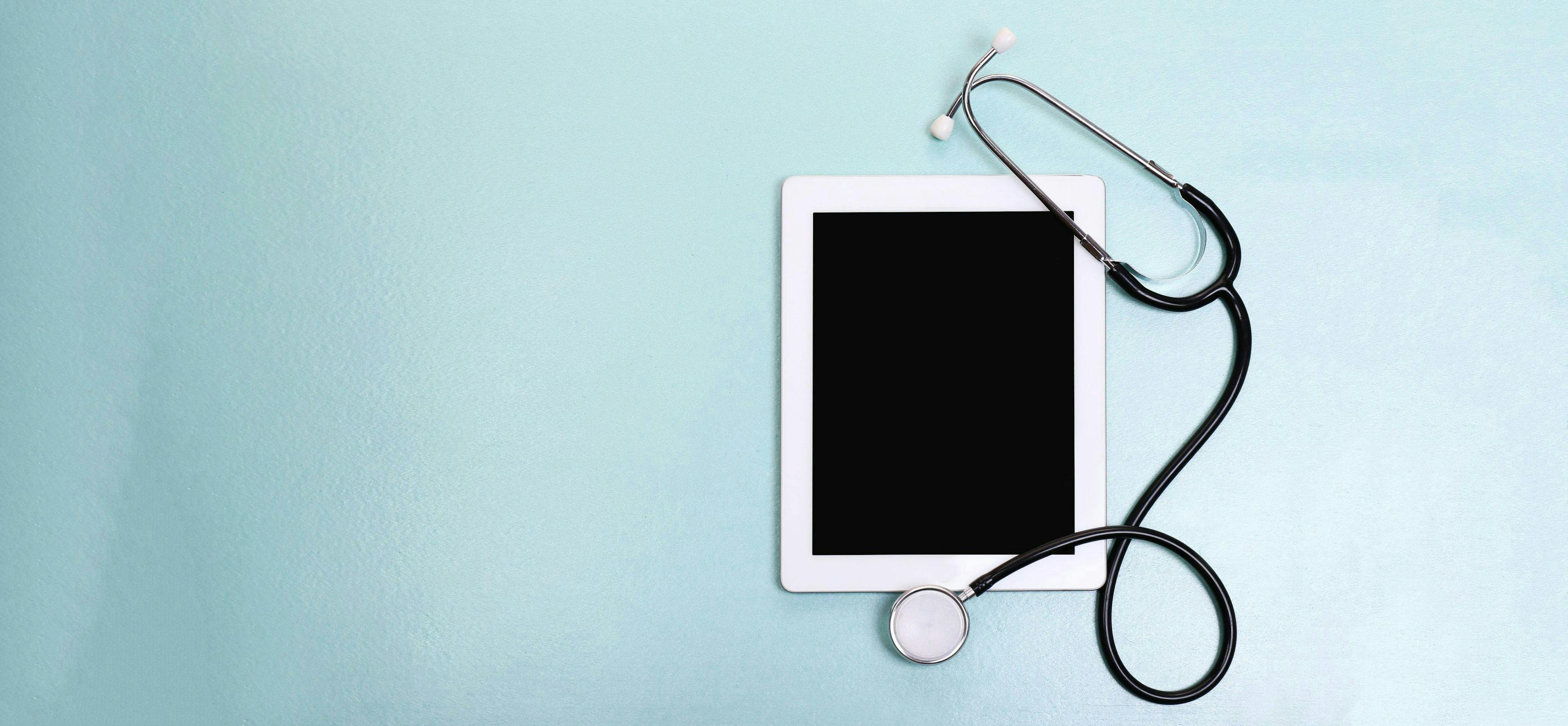Dr. Mitesh Patel on Nudging, Tech, and Health Care
Background
Health care is filled with choices. For providers, this can be choosing the right prescription, deciding whether to (de)escalate treatment, offering the influenza vaccination, or referring a patient to a specialist. For patients, it is reflected in the decisions underlying their willingness to accept and adhere to the doctor’s orders.
High-quality health care depends heavily on high-quality decision-making. But far too often, this isn’t the reality of medical practice. How choices are framed in the context of healthcare delivery has received very little attention until very recently. This is why I wanted to sit down and talk with Mitesh Patel, MD, MBA.
Dr. Patel is the Director of the Penn Medicine Nudge Unit, the world’s first behavioral design team embedded within a health system. He is also the Associate Director at the Center for Health Incentives and Behavioral Economics, on faculty at the Penn Medicine Center for Health Care Innovation and the Center for Health Incentives and Behavioral Economics, a Staff Physician at the Crescenz VA Medical Center in Philadelphia, and a Senior Fellow at the Leonard Davis Institute of Health Economics.
His research combines behavioral science with scalable technology platforms such as electronic health records and wearable devices to improve health and health care. He has led more than 25 clinical trials in partnership with health systems, insurers, employers, and community organizations, that testing interventions such as nudges, incentives, and gamification to change clinician and patient behavior. This work includes digital health interventions that use wearable devices and smartphones, and health system interventions using the electronic health record.
As an aspiring physician interested in the leveraging behavioral science to design and test approaches to steer medical decision-making toward higher value and improved patient outcomes, I was thrilled to interview Dr. Patel.
Behavioral Science, Democratized
We make 35,000 decisions each day, often in environments that aren’t conducive to making sound choices.
At TDL, we work with organizations in the public and private sectors—from new startups, to governments, to established players like the Gates Foundation—to debias decision-making and create better outcomes for everyone.
Interview
Sanketh: You describe that human behavior is the final common pathway for nearly every advance in medicine. Could you elaborate on this?
Dr. Patel: In order for medical therapies, tests, and treatments to benefit patients, two things need to obviously happen. The clinician needs to recognize that a patient meets criteria for that test, therapy, or treatment, and then prescribe or order it. Then, the patient has to understand how they will benefit, and then adhere by either taking the test or medication. Unfortunately, one or the other often does not happen. This creates opportunities for ways to improve the delivery of health care.
About a third of health care starts to become unnecessary or redundant because we are doing too many things that we have already done to address issues that would actually be better solved through addressing these gaps in decision-making.
Sanketh: Why do you think health is one of the last frontiers to embrace behavioral design as a creative, human-centered approach to defining and solving problems?
Dr. Patel: This line of work has gained much more traction in fields like finance, retail, and even entertainment. Health care, however, is much slower because it is highly regulated, and rightfully so. Nudges are really influential and if they are designed in the wrong manner, it can lead to adverse events.
We can’t simply apply typical marketing techniques to health care. Health care has many logistical challenges because there are multiple stakeholders involved. Someone can’t simply advertise colon cancer screening to a patient. It has to be ordered by a clinician or health system. Then, on the patient level, patients often do not know what test or treatment is best for them, creating a communication gap that must be filled.
Sanketh: In this discussion of workflow in health care, the topic of electronic health records (EHRs) is inevitable. How can we use EHRs as a vehicle to nudge providers and modify behaviors?
Dr. Patel: EHRs are now widely adopted by clinicians and health systems by more than 90% of them. It used to be that all of our health care decisions were made either by verbal communication or on pen and paper. Now, everything is funneled through the EHR, which gives us visibility into the decisions that are being made. It also introduces an environment in which those decisions can be influenced.
A lot of effort goes into implementing EHRs and optimizing them, but there is still a lot of low-hanging fruit in terms of how we can change perhaps the framing of information, the ordering of options, the default option, when we prompt someone with an alert versus not, and so on. There are a lot of different tools in the choice environment within EHRs that help guide clinicians towards the right decision at the right time, and I think that's where the opportunity really is—a way to do that systematically, to learn, and then to spread what works. In parallel, stopping what is not working.
Sanketh: There's a lot of controversy around nudges because many view them as coercion or manipulation. However, in many cases, there is always an inherent default nudge that is already influencing behavior in some way. So implementing a nudge is more about adjusting the environment to redirect the nudge towards improved outcomes in a more structured way. Otherwise, the nudge is still present, but in an unstructured manner that could actually be promoting poor outcomes.
Dr. Patel: That's a great point. Many clinicians express how they have been an expert in their field for X decades and trained for Y years. They become very skeptical when they hear that someone else can influence their decisions regarding their patients’ outcomes in the right direction. We often have to make people aware that the current design of the electronic health record is already nudging them in one direction or another. Actually, in many cases, it causes extra work to do the things you already want to do. In other cases, it's actually misaligned with what's best for patients. So the question is not whether we should nudge, but rather how do we strategically align nudges in the appropriate direction while keeping patient outcomes and the burden on clinicians in mind.
Sanketh: It’s also widely recognized that EHRs are a leading contributor to provider burnout, and burnout contributes to medical errors, increased susceptibility to biases, and poor medical decision-making. Could you speak a little bit to how nudges can potentially mitigate burnout to reduce its downstream adverse effects on patient care?
Dr. Patel: When a lot of people hear the term nudges, they think that they're going to receive an alert or extra information that they have to process. The most successful nudges are actually the ones that reduce burden on clinicians.
There's all kinds of alerts and information in the electronic health record which are not useful. However, there is a lack of research that has looked at this in a systematic way. By comparing alerts in one setting to another setting with no alerts, we can actually determine the effectiveness of these alerts and potentially provide strong evidence for turning off any ineffective and burdensome alerts, which really is just noise at that point.
Then, we can design nudges that, instead of prompting clinicians, might default clinicians towards the easiest pathway. For example, we had a nudge for flu vaccination where instead of alerting physicians, we had an alert that went to medical assistants when they triage the patient for the vaccine. The alert simply told the patient, “Hey, it's flu season you should talk to your doctor about this.” If the patient wanted the vaccine, the clinician would sign and it was easy. If they didn't, they would then spend time talking to the patient about their concerns and try to address those. In this situation, the clinician is spending more time talking with patients, rather than dealing with those alerts, so I think there's a lot of opportunities where nudges can reduce the burden on clinicians.
Another example is a study we published last month on cardiac rehab. Cardiac rehab is an evidence-based program consisting of 3 sessions a week, for 12 weeks, of structured exercise with a cardiologist on site who gives you advice on exercise, diet, and medications. It is found to reduce mortality and hospital readmissions by about 30%. In Penn’s health system and many others, however, less than 20% of patients were being referred for cardiac rehab. So let’s say 100 patients come in this month with heart attack or stroke. 85 would go out the door and never be referred for cardiac rehab. When you ask clinicians whether they would offer cardiac rehab to someone who just had a heart attack or stroke, they say that everyone should get it. It’s effective and paid for by insurance.
So we then started digging into why clinicians aren’t actually referring patients to this, and we learned that the process for making a referral was very burdensome for clinicians. They had to fill out a paper form consisting of about 20 fields amidst a busy day of rounds. Essentially, it was their responsibility to identify who is and isn’t eligible.
We then spent three months going back and forth on how we could automate this. What we came up with was linking the form to our secure text messaging system so that care managers on rounds got the names and locations of the two or three patients every day who should be referred. The form was templated, so the clinician no longer had to fill it out. They still had to sign, but now it was electronic. And it was also designed so that it was opt-out, meaning that the patient would be automatically referred unless he or she presented any concerns. Then, the care manager went to the patient with a vetted list of cardiac rehab centers, near their home, covered by their insurance, and just made it easy for the patient to be able to do that.
We found that the cardiac rehab referral rate went from 15% to 85% and [was] sustained that way for two and a half years. We had two control hospitals which, once they found out about these great results at the hospital across the street, their rates went from 15% to 25%. Noticeably a smaller increase, [which is] a demonstration of how awareness alone is not enough. And if you think about it, all we did was we made it easier for clinicians to do something that they already wanted to do by leveraging technology.
Sanketh: Wow, these results are beyond astonishing, and what’s beautiful is that the intervention was so simple. It reminds me of the classic go-to example for defaults, which is the case of organ donation. In the United States, people have to opt-in to be an organ donor. In other countries, the default is being an organ donor with the option to opt-out. This is likely why we see a smaller percentage of the U.S. population being an organ donor.
Dr. Patel: Yes, exactly. Defaults are one of the most powerful measures you can implement.
Sanketh: Now shifting gears, in a recent article of yours, you discuss how behavioral phenotyping can guide digital health design and innovation. Is there a trade-off between the personalization of a solution, and the scalability of that solution?
Dr. Patel: Most behavioral interventions currently designed are one-size-fits-all, which assumes that a single intervention will work for people in very different ways. We are currently figuring out the best methods to personalize these interventions. Newer forms of technology make it easier to personalize, and it’s oftentimes much simpler than people think. For example, delivering a personalized nudge to a million patients does not really mean sending out a million different messages. Instead, it means stratifying the population into five or six groups or however many that makes sense, and then sending out five or six messages. Oftentimes, it's nothing more than changing a couple words in a text message. In some settings, however, it can be much more difficult to do that. We need to be careful in picking the situations where phenotyping and personalizing nudges can be implemented at scale.
Facebook and Google do this every day—you get different search results based on your location. Your feed will be different tomorrow based on the actions you took today. We need to find opportunities for such algorithms in the personalization of digital medicine.
Sanketh: We talked about how scalable technologies and digital platforms can democratize nudges. This applies to patient decision-making. For example, medication adherence is a huge problem in health care, and nudges have been proven to be effective. However, in the context of some patient populations, there are communities that are not as well-versed with technology. I actually currently work at a low-income clinic that serves uninsured patients, and many patients only use their phones to make phone calls. Even those with more advanced smartphones are not very aware of the phone’s full capabilities. How can we nudge such patient populations through means rather than technology?
Dr. Patel: This is another area where we have to think about phenotyping because a lot of tech solutions may not make as much sense for people that are less tech-savvy or don't have access to technology, especially when they are expensive products like wearable devices. There are many ways we can deliver the same behavioral insights from such interventions in low-tech forms. For example, rather than fancy apps, we can simply send text messages or emails.
We can also think about the way that we frame information that they're getting already if they're coming in to see their primary care doctor and they're having a conversation. Many patients will still get access to different types of materials either electronically or on paper, and so I think the same insights apply. It's just the delivery channel that might be different.
Interestingly, we even find for people that are tech-savvy, the low-tech solutions often work better. Sending someone a simple text message often gets higher engagement than asking them to communicate like a chatbot. There are some cases where the high-tech and machine-learning algorithms really are useful, but in most cases you can use simpler approaches.
Sanketh: Could you elaborate a bit more about how different patient populations respond differently to different interventions?
Dr. Patel: Current COVID-19 vaccination efforts are a perfect example. Many health systems are sending information regarding vaccine registration through emails. Sometimes, people who work at these health systems don't access their email as often because it's not part of their workflow. With these people, you might be able to reach them better through text messaging than other channels. Another example is lower-income countries where phones are used more than any other platform. In such countries, they don’t use fancy patient portals through the EHR, and texting is really the primary approach.
Sanketh: Speaking of COVID-19, I saw that you wrote an article about how we can use nudges to improve vaccine uptake. After the announcement of the three vaccine candidates, I also wrote an article about the behavioral hesitations to vaccine uptake. Now that we're about three months in, how well do you think current public health communication and policies are doing on this front from a behavioral science perspective?
Dr. Patel: Right now, there's more demand for the vaccine than there are vaccines. At some point, that will change to a situation where we have ample supply but half the population is hesitant or hasn't gotten the vaccine. This is when behavioral science approaches will be most important. We've also seen early on that racial minority groups are getting the vaccine at much lower rates than other groups. There is still a lot of opportunity to do much better, not only in incorporating behavioral science but then testing those approaches. At the moment, there's no data on what health systems or public health groups are doing, what their messaging is, and whether or not it's working. Each group is doing it independently.
This morning, we actually posted online results from a mega-trial I tweeted about earlier today, where we tested 20 different text messages for flu vaccination. Our results could inform the COVID-19 vaccination efforts. We found the best message was one that said the flu shot is “reserved for you,” instead of saying “available.” This simple change correlated to a 11% relative increase in flu vaccination at a Walmart, where almost a million people go into the pharmacies.
However, the word "reserved" created some worry for pharmacies because it falsely implies that pharmacies might be out of the vaccine. Instead, we used the term “waiting for you” for available vaccines. This language also resulted in a 10% increase in uptake. Such simple interventions could be incorporated into the COVID-19 vaccination effort to improve vaccination rates.
Sanketh: I love that. At the onset of the pandemic, the government came up with the term social distancing, which focuses on the negative rather than the positive. A much better alternative would probably have been “physical distancing” or perhaps even something that focused on the benefits, such as “safety distancing.” Hopefully we see some of those changes adopted on a wide scale in the context of COVID-19 vaccine uptake.
Let's talk about the future of the field. In 2019, the nudge unit hosted a "Nudges in Health Care" symposium. And after the two-day event, many leaders in health care were inspired and started to take steps to launch their own behavioral design team for their own hospitals. How quickly are hospitals currently adopting the concept? Will there be a point where every large academic hospital will eventually have one in the future?
Dr. Patel: The idea is spreading rapidly. We have our next Symposium on May 20, 2021, and we already have over 400 attendees from 200 organizations around the world sign up for that. We've had multiple units start in the last couple years, and we have helped them through the process. There's now one at Geisinger, UCLA, and the University of Washington. I think many more will come over the next few years, but in others it might be just incorporating some of these principles into existing teams.
There are a lot of teams that are already working on health informatics and how we think about decisions in the electronic health record. Every house's health system is different. Some of them have really strong behavioral science expertise, others don't. Some of them really have a strong team in terms of implementing these kinds of perspectives [and] interventions; others, not so much. Our goal is to help accelerate that movement and try to help interested systems have the resources and materials they need.
Sanketh: So how difficult is it for a hospital without a strong behavioral science backbone to implement the findings from your research studies at the nudge unit?
Dr. Patel: It’s not that difficult to get started. We do have ways that they can interact with our team and other teams to communicate and get insights. But that's something that we're working on further facilitating.
Our goal is to make it less difficult. We do this by publishing all of our research for people to learn from and leverage. We've got examples of more than 50 projects, many of which have had really great successes and others which haven't worked. We'd like people to learn from even our failures so that they avoid making the same mistakes. We hold the symposiums to disseminate the work.
Sanketh: Everything revolves around economics. What’s the ROI for hospitals looking to implement a nudge unit?
Dr. Patel: The cost varies, and it's highly dependent on whether institutions are hiring new people for their teams, for example. Our group is about 90% funded by grants. We get a little bit of funding from our health system foundation, which we then leverage to get more grants that accelerate the work.
The ROI can be incredible. The first project looked at prescription rates of generic versus brand name medications. Our intervention made generic medications the default options, and clinicians had to actively opt out in order to prescribe a brand name medication. Over the course of two years, this intervention saved about $32 million. And what’s amazing is that the intervention only took one hour to implement. So the potential for ROI is huge in that just one or two projects can overcome the cost of implementing these types of teams.
Sanketh: That's amazing, I'm looking forward to the wide adoption of behavioral science in hospital systems, and I am excited to attend the 2021 Nudges in Health Care Symposium in May!
Wrapping it up
Nudges and reframing choice architectures is quickly gaining attention in the healthcare industry, and is quickly proving its value for the multiple stakeholders involved in health care. Especially with the rise of digital health innovation, leveraging insights from behavioral science offers a great opportunity to increase the personalization of health care, and in turn, steer medical decision-making towards improved outcomes.
About the Author
Sanketh Andhavarapu
Sanketh is an undergraduate student at the University of Maryland: College Park studying Health Decision Sciences (individual studies degree) and Biology. He is the co-Founder and co-CEO of Vitalize, a digital wellness platform for healthcare workers, and has published research on topics related to clinical decision-making, neurology, and emergency medicine and critical care. He is also currently leading business development for a new AI innovation at PediaMetrix, a pediatric health startup, and previously founded STEPS, an education nonprofit. Sanketh is interested in the applications of behavioral and decision sciences to improve medical decision-making, and how digital health and health policy serve as a scalable channel to do so.




